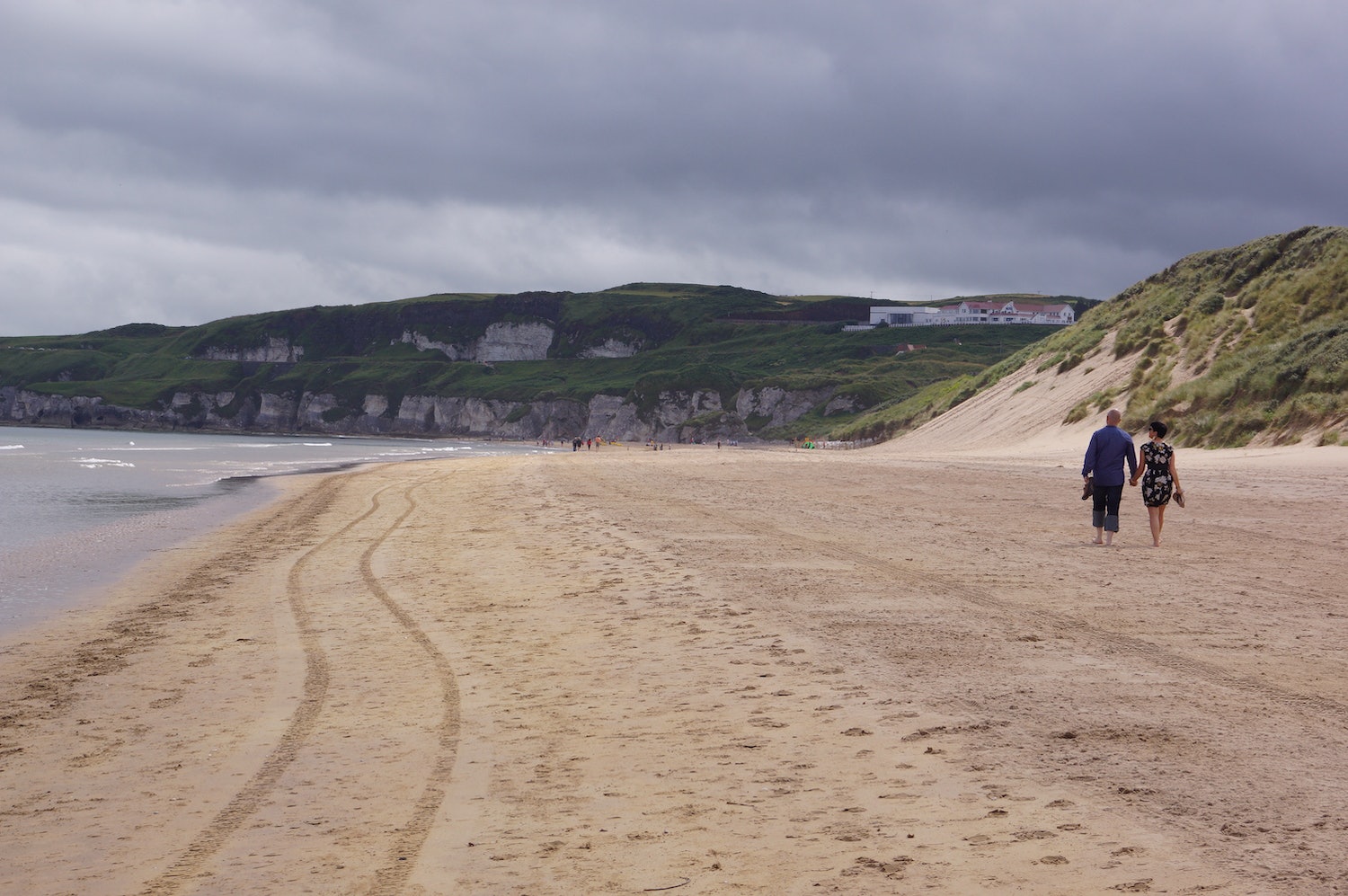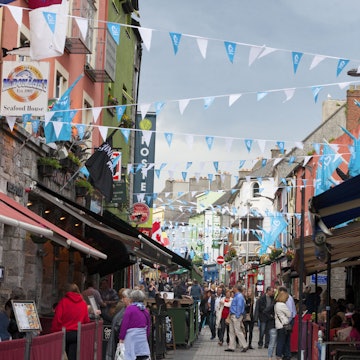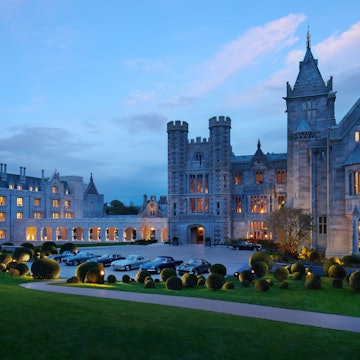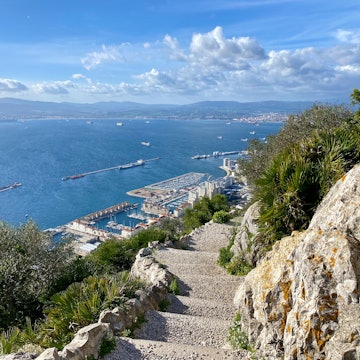
The best time visit Belfast: a seasonal guide
Jul 11, 2022 • 8 min read

In between showers, the warm-weather months bring mild temperatures and balmy days in Northern Ireland, especially pleasant on Belfast Lough © Niall_Majury / Getty Images
Belfast’s rise as one of the most popular tourist destinations on the island of Ireland comes as no surprise to locals.
The capital city of Northern Ireland abounds with great food, top-tier attractions and welcoming locals with cheeky charm and fierce wit. Not to mention the ubiquitous craic, which the city runs on as an abundant natural resource.
Multi-layered and fascinating, complex and compact, Belfast is a city worth getting to know. And whether you’re planning a quick weekend getaway or settling down for a spell and using the city as a jumping-off point for exploring the larger region, it’s worth thinking through the best time to sample its pleasures.
Seasonal changes are Belfast’s sweet spots: the moment when spring becomes summer is the balmiest and brightest time to explore a usually rainy, cloudy city. And the late summer/early fall moment brings alfresco bites, happy-hour cocktails and cut-price overnight stays.
Here are the best times to visit Belfast.
Spring into summer: March to June is peak season for sunshine in Belfast
Though Ireland enjoys year-round tourism, the segue from spring to summer is particularly special. Days get longer, temperatures rise, the possibility of sun beckons (though never without the threat of rain) and a calendar of events makes Belfast come to life, from St Patrick’s Day festivities and picnics in the park to coastal day trips.

Summer sundowners: shoulder season from July to October can be sensational in Belfast
Summer’s swan song might actually be the sweetest spot. July and August are the hottest months, with temperatures resting comfortably between 15°–20ºC (59°–68ºF). Yet even these months can still deliver as much rain as any other month of the year. Interestingly, July and August are also when you can find the cheapest flights to Belfast. Early September is another great moment to consider, as this is when the schools in both the United Kingdom and the Republic of Ireland resume, so inflated summer accommodation prices tend to take a welcome dip.
Winter wonders: expect cozy charm in the cold weather between November and February
In Latin times, Ireland was known as Hibernia, meaning “Land of Winter” – though the cold, dark months bring cozy charms (think brisk walks in scarves and fireside chats), it’s definitely challenging weather for enjoying a visit.
The weather in Belfast is predictably wet. No season, month, week or day is immune to rainfall in Ireland, and October and November are statistically the wettest months. Late November to mid-February tends to bring the coldest temperatures to the city, often lingering between 0° and 5ºC (32°–41°F). The upside to dark days is great deals on accommodation and far smaller crowds at key attractions, especially during weekdays.
Winter is coming...to an end: open the door to a Game of Thrones tour in January
Game of Thrones put Northern Ireland on the pop-culture map, serving as a dramatic backdrop for many iconic scenes in the fantasy-drama series. The region wears this endorsement with pride, and Belfast is the pick-up point for many different Game of Thrones day tours. These take in any number of the 20 key filming locations, like the Dark Hedges and Cushendun Caves. In the city, you can also find one of the 10 unique “Game of Thrones Doors” dotted around the region – such as the one at The Dark Horse bar in the city’s Cathedral Quarter. If you’re lucky, you might also catch the majestic Game of Thrones Tapestry on display at the Ulster Museum.
Key event: Out to Lunch Arts Festival
Try all-weather Tastes and Tours in February
Whatever the weather, all year long Taste and Tour has been “flavor raving since 2014” – the company offers a heap of different food-focused walking tours weekly, from gin jaunts and whiskey walks to its signature Belfast Food Tour. Crisscrossing the city with an enthusiastic expert local guide is an ideal introduction to the flavors (and quick wit) of Belfast.
These tours often book up three months in advance, so visiting in one of the quieter months may help you get a coveted spot, especially if you’re on a last-minute jaunt. Take along a brolly (umbrella), good walking shoes, weatherproof wear and (of course) a big appetite.

Belfast blooms in mid-March
After the snowdrops and crocuses have sprung and the daffodils peek through the soil before bursting into yellow, Ireland blossoms in full around mid-March. This coincides with the year’s first major surge of tourism, around celebrations for St Patrick’s Day (March 17). Countless parades and cultural events take place in towns and cities across the land – and Belfast is no exception. Experience the city’s nightlife through the jigs and reels of traditional music in pubs, or seek out some of the most celebrated flavors and producers from the land and larder of Northern Ireland, which many consider Ireland’s premier food and drink region.
Key events: St Patrick’s Day, Belfast Children’s Festival
Take shelter from April showers at exhibitions and museums
A standout among the city’s lineup of museums and one of the most popular places in town, Titanic Belfast is an award-winning attraction that’s a must-see for any visitor. April is a particularly poignant moment to visit, as the museum marks the anniversary of the famously doomed liner’s maiden (and only) voyage with various special events. A stroll around the surrounding Titanic Quarter and Maritime Mile is a pleasure any time of year.
Key events: Belfast Film Festival, Easter
Balmoral brings the crowds in May
Each May the Balmoral Show rolls into town, bringing a slew of agricultural producers and visitors to Balmoral Park, 20 minutes outside the city. The annual festival easily attracts over 100,000 attendees, who come to enjoy a taste of the finest food and drink the region produces, as well as displays from horticulture and farming exhibitors.
Key events: Cathedral Quarter Arts Festival, Balmoral Show, Beer and Cider Festival
June is all about alfresco festivals
For live-music lovers, the last two weeks in June are synonymous with the music festival Belsonic, held in picturesque Ormeau Park. Since 2008, the festival has welcomed such world-class headliners as Green Day, Thin Lizzy, Arcade Fire, David Guetta, Tiësto, Faithless, The Killers and Stormzy.
Key events: Belfast Photo Festival, Belsonic, Sundays on the Maritime Mile
July anchors marching season
The period between April to August is known as “Marching Season,” a time when parades organized by various groups happen in the Belfast region. The season peaks with the events on and around July 12 – “The Twelfth,” as it’s locally known – a public holiday that commemorates the victory of the Protestant King William of Orange over the Catholic King James II at the Battle of the Boyne in 1690. Large-scale bonfires are ignited in unionist/loyalist areas, with the occasional, controversial burning of Irish flags and effigies of nationalist politicians and public figures, as well. While not necessarily a reason to avoid the city, such gatherings are worth keeping in mind as you assess just where you’re planning to visit and stay in Belfast.
Key events: Titanic International Tattoo Convention, Belfast TradFest, Belfast Pride

Hit the beach or enjoy picnics in the park in August
Belfast is a famous port, where the Lagan flows into Belfast Lough and meets the Irish Sea. There are plenty of beaches near the city, too – and as the warmest month of the year, August might be the best time to explore them. You can reach the sand in as little as 20 minutes, though the best beaches are found around an hour away along the beautiful Antrim coast.
In the city, Ormeau Park is one of the leafiest and loveliest places for picnics on warm days. Make sure to pick up local Irish cheeses, charcuterie, chutneys, butter, bread and sweet treats from Indie Füde.
Botanic gardens and Queen’s strolls in September
As the nights get longer and the emerald canopy that crowns trees turns to a rich palette of russet, ocher and chestnut brown, autumn might just be the prettiest time to explore Belfast. Take in the urban fall scene by heading to the Queen’s University quarter and taking a stroll around campus before visiting the Botanic Gardens, just steps away.
Key event: Belfast Half Marathon

Boo! Belfast embraces Halloween in October
Did you know that Halloween is a wholly Irish creation? The spooky modern-day holiday originates from the Celtic festival of Samhain, and while Northern Ireland’s second city Derry may be the Halloween heartland, Belfast does its best to keep up. Think ghost tours, spooky cemetery walks, dress-up events and pumpkin patch trips.
Key events: Belfast International Arts Festival, Halloween
International artists arrive in November
The Belfast International Arts Festival has been an annual staple of the city’s cultural life since 1962. Every October and November, a wide and always-eclectic program of contemporary art and cultural events offers something for all ages and interests. Warm up with a mug of award-winning Co Couture hot chocolate, an unmissable taste of winter in Belfast.
Key event: Belfast International Arts Festival
Jingle all the way through the Continental Christmas Market in December
Rivaling those of its continental cousins, Belfast’s large and popular annual Christmas market runs from mid-November to mid-December. On the grounds of beautiful Belfast City Hall (itself worth a proper visit), the market offers irresistible seasonal treats like roasted chestnuts, bratwurst, glühwein, cakes, sweets and locally made stocking stuffers. Nearby Victoria Square is also the shopping epicenter of the city, should you need to pick up designer gifts.
Key events: Christmas markets
Community expression and sensitivities in Belfast
Northern Ireland has endured a famously fractious first century, from the partition of the island that resulted in protests over civil rights and the Troubles, through to the Good Friday Agreement and beyond. Thankfully, recent decades have brought relative peace – though tensions still exist between the unionist/loyalist and nationalist/republican communities, which can flare up from time to time. Such antagonisms are often confined to specific neighborhoods or areas and are rarely present in the city center.
Be on the lookout for flags and murals that will often suggest the majority community in particular neighborhoods. Displaying the Union Jack indicates a commitment to the union within the UK (and likely a Protestant affiliation), while flying the Irish tricolor flag indicates a nationalist desire for reunification with the Republic of Ireland (and Catholic sympathies).













